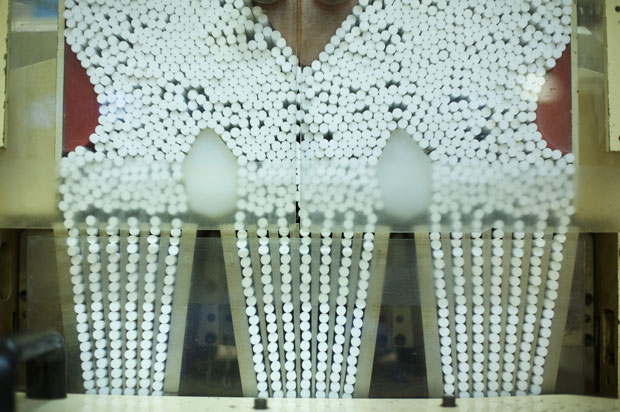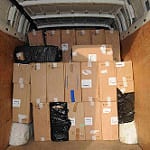Iran will have reduced its cigarette imports from four billion to two billion before the end of the current Iranian calendar year, Mar 21, 2018, according to a Mehr News Agency report.
Speaking at the 28th Working Group session of the Taskforce against Smuggling Goods and Foreign Exchange, the head of the Iranian Tobacco Planning and Supervision Center Ali-Asghar Ramzi put Iran’s current annual cigarette consumption at about 55 billion.
A number of reports in Iran last year described how the country was aiming to become self-sufficient in leaf-tobacco production and cigarette manufacturing.
And Ramzi said that 1,300 direct and more than 4,000 indirect employment opportunities had been created already in 10 cigarette production plants in the country.
However, in October doubt was cast on claims that Iran would become self-sufficient in the production of leaf tobacco within five years.
A story in The Financial Tribune quoting the Al Sharq newspaper said that while the designers of the country’s sixth five-year development plan, 2017-2022, had envisioned Iran becoming self-sufficient, the plan seemed unlikely to be fulfilled given what the Tribune described as the sorry state of Iran’s tobacco industry.
The plan had set the goal of producing between 40,000 and 50,000 tons of tobacco a year.
But, according to Ramzi, only 20 percent of this amount was being produced in Iran. The other 80 percent was imported from Latin America, Africa and Asia.
While it makes sense to increase local production since imported tobacco is said to be 30-40 percent more expensive than is domestic tobacco, the problem is that former tobacco farmers, who now grow rice or other agricultural products, are said not to be willing to switch back to tobacco.
Meanwhile, in August, another report in the Tribune said that Iran was expected this year to manufacture more than 90 percent of its cigarettes locally.
It said that domestic cigarette production had reached 45 billion in the most recent Iranian year (March 2016-March 2017), close to 15 billion more than the production of the year before.
According to the August story, Ramzi had said plans were underway to increase the local production of cigarettes to 50 billion this year.
Tag: Iran

Iran cuts cigarette imports

Self-sufficiency a dream
Doubt has been cast on claims that Iran will be self-sufficient in the production of tobacco within five years, according to a story in The Financial Tribune quoting the Al Sharq newspaper.
While the designers of the country’s sixth five-year development plan, 2017-2022, have envisioned Iran becoming self-sufficient, the plan seems unlikely to be fulfilled given what the Tribune described as the sorry state of Iran’s tobacco industry.
The plan has set the goal of producing between 40,000 and 50,000 tons of tobacco a year.
But, according to the head of the Center for Tobacco Planning and Supervision, Ali Asghar Ramzi, only 20 percent of this amount is now being produced in Iran. The other 80 percent is imported from Latin America, Africa and Asia.
“Plans have been made to increase land under tobacco cultivation by 500 percent to achieve self-sufficiency,” the official said, while adding that imported tobacco is 30-40 percent more expensive than is domestic tobacco.
The problem is that former tobacco farmers, who now grow rice or other agricultural products, are said not to be willing to switch back to tobacco.
Most tobacco farms in northern Iran have been converted to paddy fields or used to build villas.

Leaf self-sufficiency sought
Iran has made plans to increase the land it has under tobacco by 500 percent, according to a story in The Financial Tribune citing the Islamic Republic News Agency and quoting the head of the Tobacco Planning and Supervision Center, Ali Asghar Ramzi.
About 20 percent of Iran’s leaf tobacco requirement is domestically produced, and the country plans to become self-sufficient.
Imported tobacco is said to be 30-40 percent more expensive than is local leaf.
Almost 65 percent of the more-than 5,000 tons of tobacco produced in Iran is grown in the northern province of Golestan, according to Hosseinali Qavanlou, head of Golestan’s Industries, Mines and Trade Organization.
Meanwhile, annual cigarette consumption in Iran stands at 55 billion.
The domestic production of cigarettes reached 45 billion in the most recent Iranian year (March 2016-March 2017), close to 15 billion more than the production of the year before.
Ramzi said plans were underway to increase the local production of cigarettes to 50 billion this year.
He said that 14.8 billion cigarettes were produced in Iran during the first four months of the current Iranian year that started on March 21, up 37 percent on the production of the corresponding period of last year.
About 960,000 cigarettes were imported and 2.6 million were smuggled into the country during the same period, figures that were down 66 percent and 44 percent respectively year-on-year.

Iran names illicit brands
Iran’s Center for Tobacco Planning and Supervision has listed the names of contraband cigarette brands on the Iranian market, The Financial Tribune reported citing the Islamic Republic News Agency.
The chairman of the center, Asghar Ramzi, said Marlboro, Royal Five, Royal, Mikado, KINGDOM, Sir, Walden, MIAMI, SX, Bon, Faros, Affair, Senator, Lamborghini, MURAD, D&G, Emerald and MAC did not have import or production permits in Iran.
However, according to the official, the number of cigarettes smuggled into Iran decreased by 30 percent from 8.6 billion cigarettes two years ago to 6.0 billion during the most recent Iranian year, which ended on March 20, 2017.
The Health Ministry says that Iranians smoke about 55 billion cigarettes annually.
The government aims to halt cigarette imports and meet domestic demand through local production.
Iran hikes cigarette production

Photo by Kuster & Wildhaber Photography 
About 45 billion cigarettes were produced in Iran during the past financial year that ended on March 20, 50 percent more than were produced in the previous year, according to a story in The Financial Tribune quoting the head of the Center for Tobacco Planning and Supervision.
“The output met close to 82 percent of domestic demand for cigarettes,” Ali Asghar Ramzi was reported as saying. “Plans are to increase this figure to 90 percent by the end of the current year.”
The Tribune story said the government aimed eventually to ‘call a complete halt to cigarette imports’.
According to the Health Ministry, Iranians smoke about 55 billion cigarettes annually.
Members of the Iranian parliament approved in mid-January new cigarette and tobacco tax rates as part of the sixth five-year development plan (2017-22).
Under the new law, the tax rate on locally-produced tobacco and cigarettes is 10 percent, that on local brands jointly produced by domestic and foreign manufacturers is 20 percent, that on domestically produced cigarettes with foreign brand names is 25 percent, and that on imported products is 40 percent.

Cooperating on tobacco
Tobacco products might form one element of a proposal under which Lebanon and Iran would co-operate in joint industrial projects, according to a story in The Daily Star, Beirut.
During a meeting on Friday with Mohammadian Shumaki, head of a delegation from the Iranian Tobacco Company, Lebanon’s Industry Minister Hussein Hajj Hasan talked of the need to create such joint projects.
“We agreed with the Iranian delegation on the need to create joint industrial projects, especially when it comes to tobacco production in the two countries,” Hajj Hasan said.
The possibility of producing Lebanese cigarettes in Iran while manufacturing Iranian tobacco in Lebanon had been discussed, he said.
“It is necessary to follow up on this issue with Regie,” he added, referring to Lebanon’s state-owned tobacco company.
For his part, Shumaki said that his visit had been aimed at discussing the outcome of Hajj Hasan’s negotiations with Iranian officials that took place during his visit to Iran last year.
“We are also exploring the best ways to strengthen our relations and co-operation in economic and industrial areas, which will weigh positively on growth,” he said.







